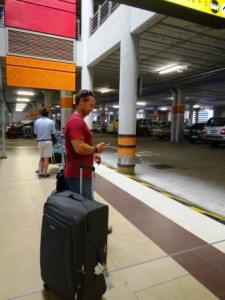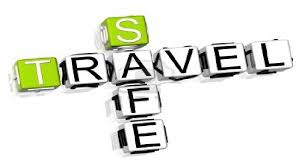Employee safety is a critical aspect of every organisation’ s security solution and very often companies neglects the implementation of travel security or personnel monitoring when travelling abroad. What a lot of companies don’t know is that they have the duty of care of looking after their people. The duty of care guidelines could not be clearer.
Employers have a responsibility to provide a safe workplace as reasonably practicable, and it is an expectation that the employers’ health and safety management systems and support will be mirrored for travelers, regardless of destination.
Recent catastrophic events in Nepal, India, and Africa have all involved Australian citizens. Consequently the evolving nature of the global security environment may place a destination you had previously considered safe to be otherwise.
India is a great example. With an increase in criminal and terrorist activities throughout the Country, coupled with a challenged police force, as a manager you should consider an informed and deliberate approach when assessing your people’s travel plans. Kidnapping is also on the rise due to economic liberalization in India. Whilst locals understand and employ measures to counter this, it is assessed that the targeting of foreigners is on the rise.
 This example confirms the requirement for an informed, planned and detailed approach to personnel safety when your personnel is travelling. A greater level of care will also be afforded if a personnel tracking system is employed. With these measures in place, you can either gain reassurance from knowing your staff are outside the reach of the incident, or rapidly implement response protocols based on timely and accurate information.
This example confirms the requirement for an informed, planned and detailed approach to personnel safety when your personnel is travelling. A greater level of care will also be afforded if a personnel tracking system is employed. With these measures in place, you can either gain reassurance from knowing your staff are outside the reach of the incident, or rapidly implement response protocols based on timely and accurate information.
Regardless of the country you intend to visit, you should develop a sound, planned approach to your safety.
The health check below will provide you with some ideas as a starting point to proactively manage your employees’ safety.
Preparation:
- Does your organisation receive Country Assessments, outlining the current risk and threat profiles for all locations on your corporate itinerary?
- Do you have a system for monitoring current travel warnings?
- In case of an incident what is your plan? Do your workers know the location and contact details of relevant embassies, in-country offices, and personal contacts?
- Who is tracking their travel? Is someone in the organisation responsible for monitoring their welfare and raising the alarm if they do not make contact when expected?
- Are all of your corporate travel policies, documents and insurances up to date?
In Transit:
- How will you maintain a two-way communication link between the traveler and the company?
- How will you know if there is an immediate and emerging threat in a location you have employees in? How will they be informed?
- Do you workers have ready access to sufficient local currency, for emergencies?
- How will you move your staff to a safe location if a catastrophic incident occurs?
- How can you access local emergency assistance? Are they capable and reliable?
On Return:
- Debrief your team. How did the trip go? What could you do better next time?
- How will you record the lessons you have learnt for later use?
- Do you need to brief the next traveler to transfer corporate knowledge?
 Travel safety encompasses accurate threat assessment, effective personnel tracking, and sound incident response planning and enactment. For organisations whose people travel often, it is a vital component of an integrated security solution. If you have completed the above health check and found your plan to be wanting, avoid complacency and seek assistance.
Travel safety encompasses accurate threat assessment, effective personnel tracking, and sound incident response planning and enactment. For organisations whose people travel often, it is a vital component of an integrated security solution. If you have completed the above health check and found your plan to be wanting, avoid complacency and seek assistance.
If you would like to find out more about travel safety, please do not hesitate to contact us on 0861090115 or info@executiverisksolutions.com.au
Nick Whitehead, Qld Operations Manager


